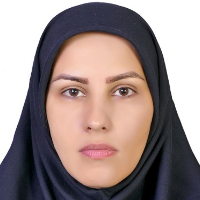Dimensions of digital literacy for primary school students
In the digital age, literacy does not only include individual skills, but also includes a set of social actions in real or digital space that uses new and digital technologies to communicate. Therefore, to complete the topic of media literacy, a new type of literacy called digital literacy has been proposed. Since students need a complete set of literacy to make the most of social networks, participate in post-industrial economies and play the role of global citizens, digital literacy as one of the new and multi-dimensional literacies is the best and most useful approach to understanding the changing landscape. It is the world that cannot be separated from education and the development of it must be provided among students, especially at the elementary level because childhood learning is the foundation of all subsequent education. In fact, understanding the dimensions and development of digital literacy among students is an answer to face the challenges of the digital age. In this regard, the aim of this research was to identify the dimensions of digital literacy of primary school students.
The current research method was applied in terms of its purpose and its method was combined (qualitative and quantitative) so that in identifying the dimensions of digital literacy of primary school students, a combined research method was used for validation. A descriptive method with Delphi technique was used for the identified dimensions. The statistical population of the qualitative part of this research included all books, articles, master's theses, doctoral theses that were published in the period from 2013 to 2014 on this topic. The digital literacy of primary school students was determined by a statistical sample of 36 documents in a targeted and criteria-oriented way. In the quantitative part, 17 experts were selected as a sample from the statistical community of educational science and educational technology experts and elementary school teachers. In order to collect data and information and analyze the findings to identify the dimensions of students' digital literacy, theoretical coding process was used in three stages of open coding, central coding and selective coding. In this step, to ensure the coding method, in addition to the self-review technique, two experts in the field of digital literacy were used to recode the findings. In order to validate the dimensions identified using the questionnaire made by the researcher, the data obtained from the survey was evaluated with Kendall's formula.
After analyzing the extracted data with MAXQDA11 software, the coding chart was drawn. Based on the results obtained in the coding process, in the open coding stage, 66 codes were extracted, 13 subcategories were obtained in the axial coding stage, and finally, in the selective coding, after combining the concepts, four dimensions were obtained. The results obtained from the research indicated that four operational, critical, cultural and transitional dimensions could be considered for the digital literacy of primary school students and each of these dimensions had components that were appropriate to their age characteristics and needs. Operational dimension included technical literacy, digital content literacy, and information literacy. The critical dimension included the components of media literacy and critical literacy. The cultural dimension included the components of digital participation, social literacy, digital ethics and digital security, and digital creativity and innovation, problem solving, digital entertainment and digital intelligence were components of the critical dimension. In the expert validation section, the value of Kendall's correlation coefficient (0.658) was obtained.
Conclusion:
In this research, the dimensions of digital literacy for primary school students were identified according to their characteristics and needs and based on the study of the experiences of leading countries in the development of digital literacy for children, which showed a balance between protection against online risks and nurturing digital opportunities and it can be a guide for the development of policies and curricula related to digital literacy among Iranian primary school students.
-
The effectiveness of artistic activities (performance, poetry reading and storytelling) in learning the concepts of subtraction in math lessons
*, Masomeh Fathei, Somayeh Hasanlou
Journal of New Approach to Children's Education, -
Needs Assessment of Extracurricular and Leisure Activities for Students in Multi-Grade Elementary Schools in Khalkhal County
Fatemeh Gholipour, *, Abdolsaeed Mohammadshafiee
Iranian Evolutionary and Educational Psychology Journal, Sep 2024 -
بررسی رابطه سواد رسانه ای والدین با شبکه تعاملی معلم و دانش آموز
*
نشریه مطالعات نوین علوم انسانی در جهان، بهار 1403 -
اثر شخصیت دانش آموز بر عملکرد یادگیری
ماهنامه رشد فناوری آموزشی، آبان 1396




